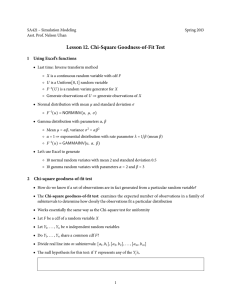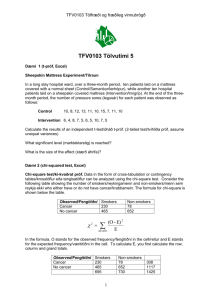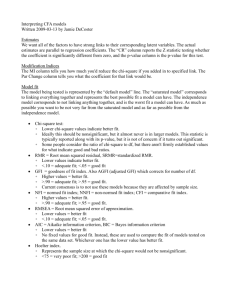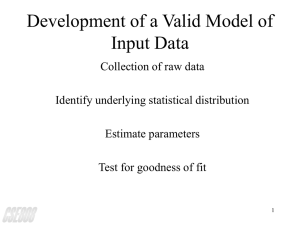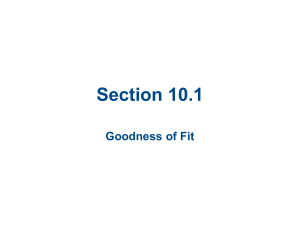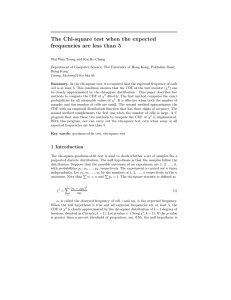Lesson 8. Chi-Square Goodness-of-Fit Test, redux 1 Using Excel’s functions
advertisement
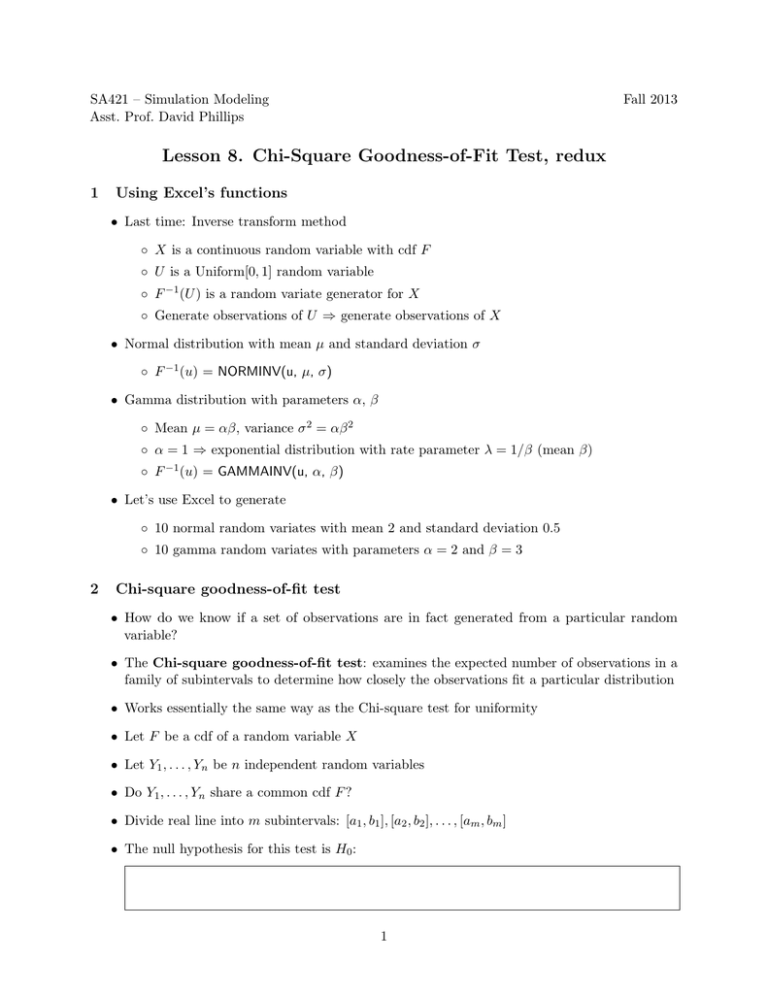
SA421 – Simulation Modeling Asst. Prof. David Phillips Fall 2013 Lesson 8. Chi-Square Goodness-of-Fit Test, redux 1 Using Excel’s functions • Last time: Inverse transform method ◦ X is a continuous random variable with cdf F ◦ U is a Uniform[0, 1] random variable ◦ F −1 (U ) is a random variate generator for X ◦ Generate observations of U ⇒ generate observations of X • Normal distribution with mean µ and standard deviation σ ◦ F −1 (u) = NORMINV(u, µ, σ) • Gamma distribution with parameters α, β ◦ Mean µ = αβ, variance σ 2 = αβ 2 ◦ α = 1 ⇒ exponential distribution with rate parameter λ = 1/β (mean β) ◦ F −1 (u) = GAMMAINV(u, α, β) • Let’s use Excel to generate ◦ 10 normal random variates with mean 2 and standard deviation 0.5 ◦ 10 gamma random variates with parameters α = 2 and β = 3 2 Chi-square goodness-of-fit test • How do we know if a set of observations are in fact generated from a particular random variable? • The Chi-square goodness-of-fit test: examines the expected number of observations in a family of subintervals to determine how closely the observations fit a particular distribution • Works essentially the same way as the Chi-square test for uniformity • Let F be a cdf of a random variable X • Let Y1 , . . . , Yn be n independent random variables • Do Y1 , . . . , Yn share a common cdf F ? • Divide real line into m subintervals: [a1 , b1 ], [a2 , b2 ], . . . , [am , bm ] • The null hypothesis for this test is H0 : 1 • Let y1 , . . . , yn be observations of Y1 , . . . , Yn • Let ei = expected number of observations in interval [ai , bi ] ◦ Rule of thumb: set up intervals so ei ≥ 5 for i = 1, . . . , m • Let oi = observed number of observations in interval [ai , bi ] • The observed test statistic is • The p-value is ◦ Small p-values (< α, where α is typically 0.05, or even 0.01) ⇒ reject H0 3 Conducting the Chi-square goodness-of-fit test in Excel • In the chi-square sheet in the Excel workbook for today’s lesson, there are 100 numbers • Are they from a Normal distribution? What mean 2 and standard deviation? • Use MIN and MAX function to determine interval of observation values • Determine subintervals (don’t forget −∞ and +∞ if applicable) • Use FREQUENCY function to determine the number of observations in subinterval i • Compute the expected number of observations in subinterval i ◦ cdf F of Normal random variable with mean µ and standard deviation σ F (x) = NORMDIST(x, mean, stdev, TRUE) • Merge subintervals so that the expected number of observations ≥ 5 for each resulting subinterval • Compute the observed test statistic and p-value 4 On your own • Generate 100 exponentially distributed random variates with mean 1/2 (Remember that the gamma distribution with α = 1 and β is the exponential distribution with mean β.) • Use a Chi-square goodness-of-fit test to test how well your random variates fit with an exponential distribution with mean 1/2. 2
